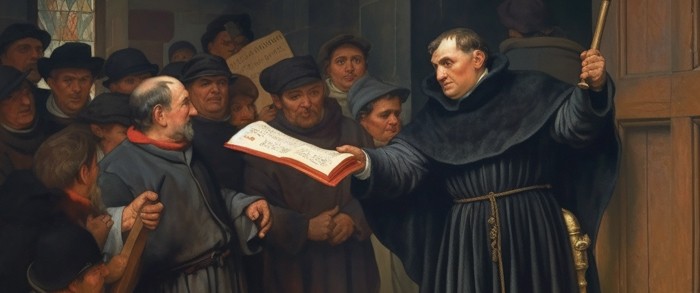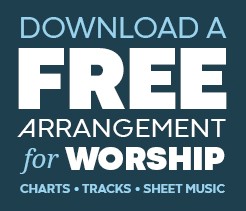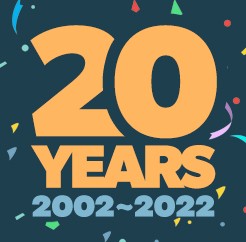Martin Luther at Wittenberg church
As worship leaders, we strive to create an atmosphere that encourages our congregations to connect with God and engage in meaningful worship. One powerful way to achieve this is by incorporating hymns into our contemporary worship sets. But how can we ensure that these timeless treasures resonate with modern churchgoers?
A key strategy is to provide background information about the hymn, its author, or its significance in church history before introducing it. In doing so, we foster appreciation and understanding among our congregations, allowing them to connect more deeply with the music they’re singing.
The Importance of Background Information
Humanizing Hymn Writers: By sharing stories about hymn writers’ lives and experiences, we remind our congregations that these songs were penned by real people who faced trials and triumphs just as we do. This human connection can make it easier for people today to relate to the lyrics and find personal meaning in them.
Revealing Historical Context: Many hymns were written during pivotal moments in church history or as a response to significant events of their time. Understanding this context can help your congregation see how God has been at work throughout history, inspiring believers to express their faith through song.
Highlighting Theological Themes: Providing background information on a hymn’s theological themes can deepen your people’s understanding of essential Christian beliefs and prompt thoughtful reflection on their own faith journey.
Practical Tips for Sharing Background Information
Do Your Homework: To share meaningful background information about a hymn, you’ll need to do some research first! Consult reputable sources such as books on hymnology, biographies of hymn writers, or reliable websites dedicated to church music history. Our own hymn histories here at hymncharts.com is a great place to start!
Be Selective: While there may be a wealth of information available about a particular hymn or its author, be discerning about what you choose to share with your congregation. Focus on the most relevant and engaging details that will help your people connect with the hymn on a deeper level.
Keep It Brief: While it’s important to provide background information, remember that your primary goal is to lead your congregation in worship, not teach a history class. Keep your introductions concise so that they enhance, rather than detract from, the worship experience.
Encourage Further Exploration: If a particular hymn has sparked interest among your congregation, offer additional resources or opportunities for them to learn more about its history or theology. This could include small group discussions, recommended reading lists, or even a sermon series on the subject.
Examples of Hymns with Rich Backgrounds
Amazing Grace: Written by John Newton, a former slave trader who experienced a profound conversion and became an abolitionist preacher, this beloved hymn is a powerful testimony to God’s transformative grace.
It Is Well With My Soul: Penned by Horatio Spafford after losing his four daughters in a tragic shipwreck, this hymn speaks of finding peace in the midst of unimaginable sorrow through faith in Christ.
A Mighty Fortress Is Our God: Composed by Martin Luther during the tumultuous period of the Reformation, this hymn serves as both an affirmation of God’s protection and a rallying cry for believers facing religious persecution.
By taking the time to provide background information on the hymns we incorporate into our contemporary worship sets, we can foster appreciation and understanding among our congregations while deepening their connection to these timeless treasures. As worship leaders, let us continue to seek ways to engage our communities in heartfelt worship that spans generations and draws us closer to our Creator.




8 Comments. Leave new
So hopeful this could and would happen in our congregation instead of foot stomping songs and always new music many can not sing
I’ve been sharing hymns and their stories for decades, especially as a worship planner and leader. I’d print hymn and song stories as my part in the congregation’s monthly newsletter, add them into the Sunday worship folders, verbally mention them before a hymn is sung, use them with other ministries beyond worship that I’m a part of, send them in an email blog that I started during the plandemic shutdown, and share them with Bible study groups I’m in. Before introducing some of the Getty songs like “In Christ Alone,” “How Deep the Father’s Love for Us” and other gems by their writing team, I’ve also shared all of the scripture references I could find so people see that even “modern” hymns are not based on mere thoughts, but on deep theological concepts rooted in the Bible. It’s also valuable to share the background to other historic hymns, like “The Star Spangled Banner” (Francis Scott Key wrote it like he did with other hymns of his. And did you know that stanza four has multiple references to God? I would use just it at least once a year over Memorial Day weekend, or around July the 4th and even near Veterans’ Day.) and recent songs like Don Moen’s “God Will Make a Way”. There are numerous books on my shelves that are great resources to draw from. It would be worth hearing the meaningful backgrounds to recent songs we sing, since they can be written out of life changing experiences, etc.
I forgot to add,…..I read in the Bible “Sing Unto the Lord a new Song” but I can never find “Stop singing the old songs (hymns).”
Amen to that
I missed including that the first stanza of The Star Spangled Banner asks a QUESTION. Wouldn’t always like your questions answered? That’s what are in st. 2 and 3, but especially stanza four. We had to learn and sing all four stanzas in third grade, and I memorized the fourth stanza ever since then. But try getting it sung today at a ball game, event, etc. and see if it gets approved. Yet st. 4 is still officially part of our national anthem so technically people can reject it being sung.
This is not a duplicate thought but a follow up comment.
I missed including that the first stanza of The Star Spangled Banner asks a QUESTION. Wouldn’t always like your questions answered? That’s what are in st. 2 and 3, but especially stanza four. We had to learn and sing all four stanzas in third grade, and I memorized the fourth stanza ever since then. But try getting it sung today at a ball game, event, etc. and see if it gets approved. Yet st. 4 is still officially part of our national anthem so technically people can reject it being sung.
should be CAN’T not “can”
Correction on prior comment – In the last line it should say CAN’T not “can”.